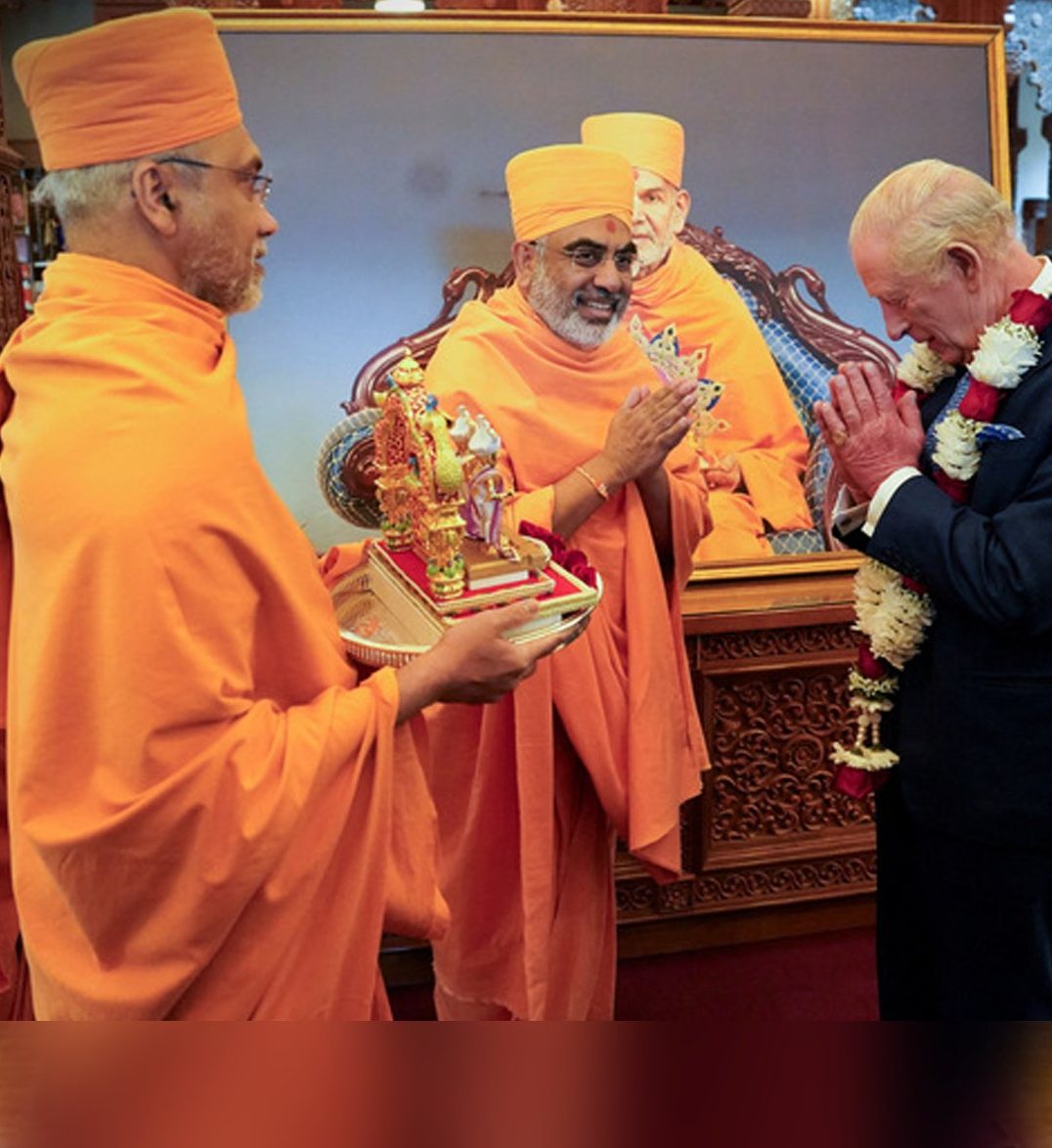King Charles III and Queen Camilla at London’s Swaminarayan Temple: A Living Experience of Indian Spirituality
In a world where cultures often cross borders, spirituality continues to serve as a bridge that connects hearts and minds. The recent visit of King Charles III and Queen Camilla to the BAPS Swaminarayan Temple in London — popularly known as the Neasden Temple — is a profound reminder of how India’s spiritual traditions have become part of the global cultural landscape. Their presence at this magnificent temple reflected not just royal courtesy but a genuine curiosity and respect for Indian philosophy and values.
A Temple Beyond Borders
The BAPS Swaminarayan Temple in London is more than a place of worship; it is a living testament to India’s timeless artistry, devotion, and community spirit.
Inaugurated in 1995, it was the first traditional Hindu temple built in Europe using ancient craftsmanship. Each piece of stone was hand-carved in India — in the states of Rajasthan and Gujarat — and then assembled in London like a spiritual jigsaw puzzle.
The temple stands as a beacon of peace and harmony amidst the modern cityscape. For over two decades, it has not only served as a sacred place for devotees but also as a cultural and educational centre for the wider community. Visitors from all faiths and nationalities often come to experience the serenity and architectural brilliance that define this spiritual landmark.
The Royal Visit: A Gesture of Respect and Understanding
When King Charles III and Queen Camilla arrived at the temple, they were welcomed with traditional Indian hospitality — aarti, garlands, and the symbolic tilak. The royal couple took time to admire the intricate carvings, sculptures, and motifs that depict stories from Hindu scriptures.
King Charles has long expressed his admiration for India’s spiritual traditions and holistic worldview. Over the years, he has spoken about the importance of Ayurveda, yoga, and environmental harmony — principles deeply rooted in Indian philosophy. His visit to the temple was therefore more than ceremonial; it was a continuation of his engagement with ideas that promote peace, sustainability, and universal respect.
Queen Camilla too showed warmth and appreciation, interacting with volunteers and community leaders who run educational and charitable initiatives through the temple. Their presence highlighted how spirituality, when practiced with compassion and inclusivity, can transcend religious and national boundaries.
The Symbolism of the Visit
The royal visit holds deeper meaning beyond protocol. It symbolises a meeting of two great civilisations — one rooted in ancient dharma, the other in centuries-old monarchy — both now coexisting in a multicultural society.
It also represents the recognition of the Indian diaspora’s contribution to British society. The temple, built through collective effort and devotion, stands as a proud symbol of the values that Indian communities have carried with them: faith, family, and service.
In today’s complex world, where religion can sometimes be misunderstood or politicised, such gestures of mutual respect remind us that spirituality’s true purpose is to unite, not divide.
Faith Diplomacy and Cultural Harmony
The concept of Faith Diplomacy — the use of spiritual and cultural values to build understanding among nations — is gaining importance worldwide. India, with its inclusive philosophy of Vasudhaiva Kutumbakam (“the world is one family”), offers a unique model of how faith can serve as a tool for harmony rather than conflict.
By visiting the Swaminarayan Temple, King Charles and Queen Camilla indirectly supported this very idea. Their engagement with Indian traditions represents how nations can connect through culture and spirituality rather than just politics and trade. Such visits are subtle yet powerful expressions of respect for diversity and coexistence.
A Space for Universal Spirituality
The Neasden Temple attracts not only Hindus but also people of different beliefs who seek peace and mindfulness. From school children to global leaders, visitors often leave with a sense of calm and inspiration. The temple’s volunteers regularly engage in social work — from health awareness drives to environmental conservation — proving that spirituality can be active, compassionate, and socially relevant.
In many ways, the temple embodies a modern interpretation of Indian spirituality — grounded in tradition yet open to the world. For King Charles and Queen Camilla, witnessing this harmony of devotion and duty was perhaps an experience that resonated beyond words.
A Shared Journey of Values
The royal couple’s visit to the Swaminarayan Temple was not just a royal outing; it was a spiritual encounter that reflected the deepening bond between India and the United Kingdom. It showed how cultural heritage can inspire respect and understanding in a diverse world.
King Charles III and Queen Camilla’s time at the temple stood as a quiet affirmation that faith, when expressed through art, service, and compassion, has the power to connect people across continents.
~Religion World Bureau









